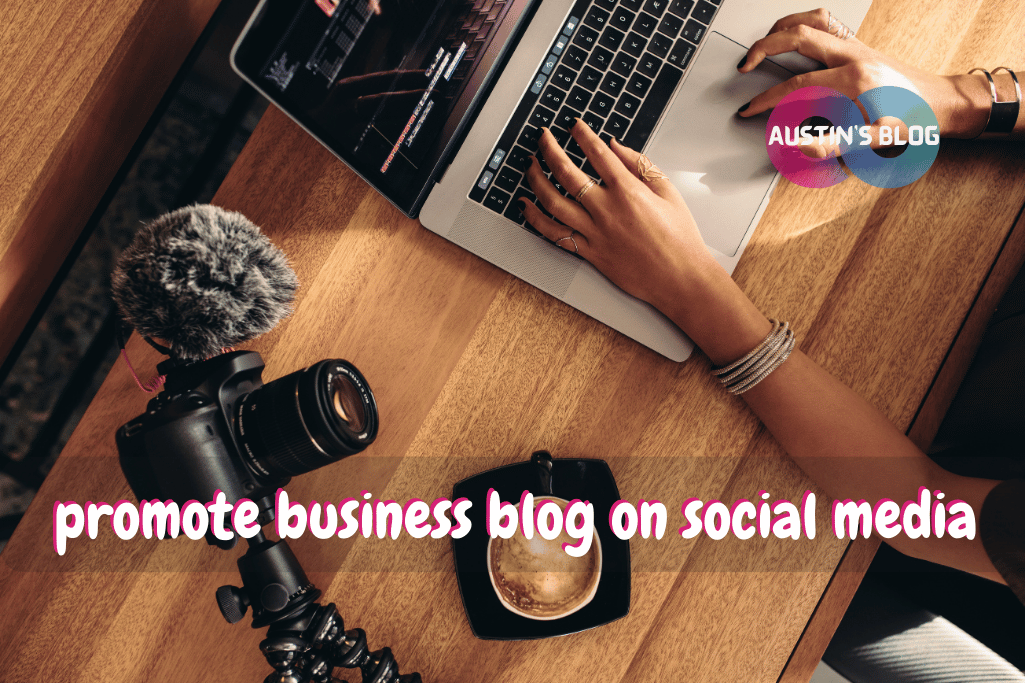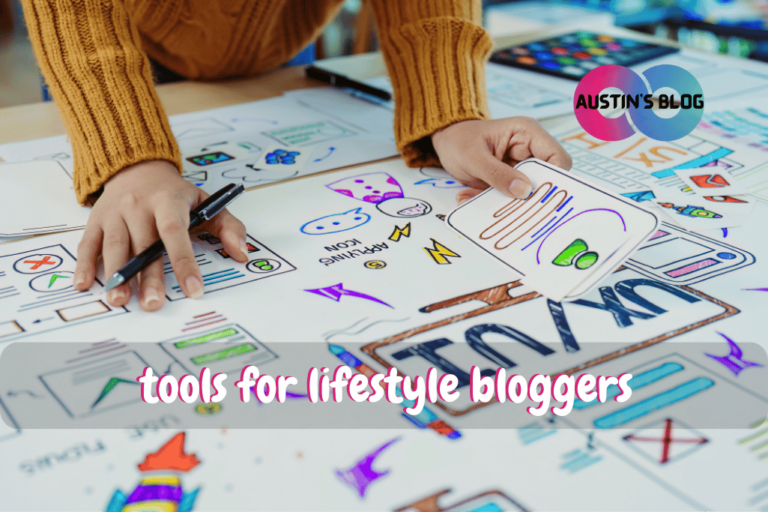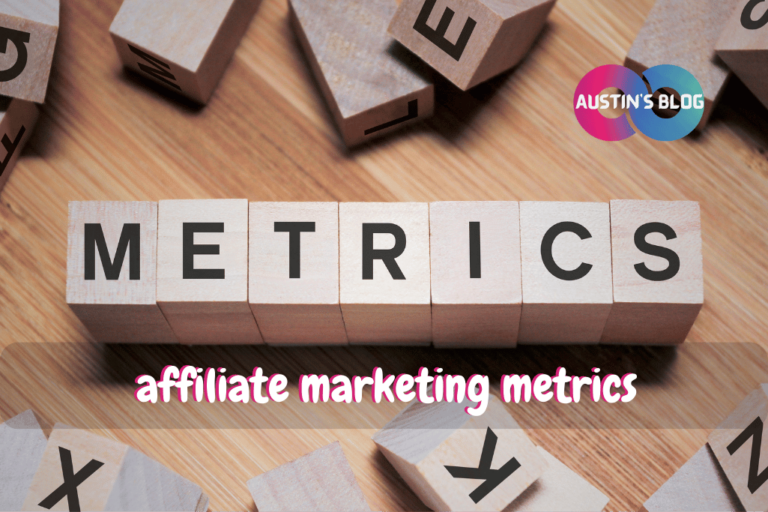Promote Business Blog on Social Media: Tips to Boost Engagement
Introduction
Imagine having a thriving blog that not only draws readers but also turns them into loyal customers.
That’s the dream, right? Learning how to promote business blog on social media can be the game-changer you’re looking for! It’s not just about posting links; it’s about strategically leveraging these platforms to amplify your content’s reach and impact.
Social media is not just for selfies and memes; it’s a powerful tool to get your business blog in front of the right audience, driving traffic, engagement, and ultimately, growth for your business.
From leveraging LinkedIn for B2B connections to making the most out of visual platforms like Instagram and Pinterest, your social media presence can widen your blog’s reach more than you ever thought possible.
You don’t have to be a marketing wizard to see results, just focus on crafting a solid strategy and engaging content that speaks to your audience.
Your social media profiles are your blog’s lifeline. Sharing your blog posts on multiple platforms not only increases visibility but also drives higher engagement.
Imagine your blog being shared across Twitter, pinned on Pinterest, or even featured in a YouTube video! The opportunities are endless when you tap into the power of social media to elevate your blog.
Key Takeaways
- Social media promotion broadens your blog’s audience.
- Engaging content and a solid strategy are crucial.
- Your social media profiles are vital for blog visibility.
Understanding The Social Media Landscape For Business Blog Promotion
To effectively promote your business blog on social media, you need to grasp the strengths of each platform, understand the demographics of your audience, and integrate social media into your overall content strategy. Let’s break this down.
Overview Of Key Social Media Platforms For Business Blogs
Different social media sites bring unique advantages for business blogs. Facebook is great for reaching a diverse audience with its vast user base.
Instagram, with its visual focus, suits brands with compelling images.
Twitter is ideal for quick updates and interactions. LinkedIn excels in professional networking and attracts a business-oriented audience.
Pinterest, a visual discovery engine, thrives on lifestyle and DIY content.
Smaller platforms like TikTok cater to a younger demographic, focusing on short, engaging videos.
Understanding these platforms helps you tailor your content to each one, boosting your chances of engagement.
Platform-Specific Strengths And Audience Demographics
Each social network has unique strengths and attracts different demographics. Facebook has 2.8 billion users across various age groups and interests, making it versatile for many types of content.
Instagram‘s 1 billion users are mostly under 35, making it perfect for trendy, visual content.
Twitter‘s fast-paced environment (with 330 million active users) suits timely news and updates.
LinkedIn is professional and has 740 million members, reaching a more career-focused audience.
Pinterest is particularly popular among women, with 459 million monthly active users interested in crafts, recipes, and more.
TikTok’s rapidly growing base of 1 billion monthly active users skews younger, favoring short videos and challenges.
Knowing your audience on each platform lets you craft precise messages that resonate.
The Role Of Social Media In The Content Promotion Ecosystem
Social media platforms offer a dynamic environment for promoting your business blog. By sharing blog posts on social networks, you increase visibility and drive traffic to your website.
Social media sites also foster community building through comments and shares, helping you engage directly with your audience.
Using social media analytics tools, you can track performance and adjust your strategies. Promoted posts and ads can target specific demographics, enhancing reach and engagement.
Additionally, integrating email marketing and SEO with social media efforts ensures a cohesive content promotion strategy, bridging the gap between popular social media sites and your blog content.
Crafting A Social Media Strategy For Your Business Blog
Creating a strategy to promote your business blog on social media involves setting goals, knowing your audience, planning your content, and balancing promotion with valuable posts. Let’s take a look at these key areas to ensure your strategy is effective.
Setting Clear Goals For Social Media Promotion
First, decide what you want to achieve. Do you want more traffic to your blog? More engagement with your posts? Crafting clear goals helps track your progress.
Tips for setting goals:
- Be specific: Instead of “increase followers,” aim for “gain 500 new followers in a month.”
- Be realistic: Set achievable targets.
- Measure progress: Use analytics tools to track results.
Identifying Your Target Audience On Each Platform
Different social media platforms attract different audiences. Identifying where your potential readers hang out can make your efforts more effective.
How to identify your audience:
- Research demographics: Use platform-specific data.
- Analyze competitors: See where similar blogs get their engagement.
- Engage directly: Use surveys and polls to get feedback from your audience.
Creating A Content Calendar For Social Media Posts
A content calendar helps you plan what to post and when. It ensures consistent posting and prevents last-minute stress.
Creating a content calendar:
- Choose scheduling tools: Tools like Hootsuite or Buffer can automate posts.
- Plan variety: Mix blog promotions, fun posts, and engagement prompts.
- Review and adjust: Regularly check what works and update your calendar.
Balancing Promotional Content With Value-Added Posts
Your followers don’t just want promotions. Balance your posts with useful information, behind-the-scenes looks, and engaging content.
Balancing your content:
- Follow the 80/20 rule: 80% value, 20% promotion.
- Share tips: Post industry-related advice or tips.
- Engage with followers: Reply to comments, ask questions, and run polls.
Creating a successful strategy involves deliberate planning and ongoing adjustments.
Each element, from goal-setting to content creation, connects to drive traffic and engagement to your blog. Keep testing and refining your approach for the best results.
Optimizing Your Blog Content For Social Sharing
Make your blog easy to share by tweaking titles, images, and settings. These changes can lead to more clicks, shares, and visitors to your blog from social media.
Creating Share-Worthy Blog Post Titles
Your blog post title matters. It’s the first thing people see. Make it short and catchy. Use numbers or questions to grab attention.
- Example: “10 Tips for Writing Better” or “How Can You Improve Your Writing?”
Tools like CoSchedule’s Headline Analyzer will help you create better titles.
Titles should also include keywords for SEO. This helps search engines and makes your blog easier to find and share.
Designing Eye-Catching Featured Images For Social Media
A great image can make your blog stand out. Use high-quality, relevant images. Sites like Canva or Adobe Spark are helpful for creating images.
Each social media platform has its own optimal image size:
- Facebook: 1200 x 628 pixels
- Twitter: 1024 x 512 pixels
- Pinterest: 735 x 1102 pixels
Use these sizes to make sure your images look good when shared. This will help to attract clicks and increase traffic to your blog.
Incorporating Social Share Buttons On Your Blog
Make it simple for readers to share your posts. Social share buttons are essential. Add buttons for platforms like Facebook, Twitter, LinkedIn, and Pinterest.
You can use plug-ins like ShareThis or Sumo to add these buttons easily. Visible buttons on your blog can increase shares by up to 35%.
Place these buttons at the top, bottom, or along the sides of your posts. This makes them easy to find and use without interrupting the reading flow.
Using Open Graph Tags For Better Social Media Previews
Open Graph tags help control how your blog posts look on social media. Use them to specify titles, descriptions, and images. These tags ensure that when someone shares your blog, it looks exactly how you want.
Here’s how to add Open Graph tags:
- Title:
<meta property="og:title" content="Your Blog Post Title" /> - Image:
<meta property="og:image" content="URL_to_your_image.jpg" /> - Description:
<meta property="og:description" content="A short description of your blog post" />
Adding these tags will improve the appeal of your blog posts when shared, which can help attract more clicks and new visitors.
Leveraging LinkedIn For B2B Blog Promotion
Promoting your business blog on LinkedIn can drive significant traffic and generate leads. To make the most of LinkedIn, you need to optimize your company page, share engaging content, participate in groups, and repurpose blog content as LinkedIn articles.
Optimizing Your LinkedIn Company Page
First, ensure your LinkedIn company page is fully optimized. Use a clear, high-quality logo and banner image that reflects your brand. Your company description should be compelling and succinct, highlighting what sets you apart.
Fill out all sections, including company specialties and locations. This helps with searchability. Regularly update your page with fresh content and encourage employees to link their profiles to your company to increase visibility.
Strategies For Sharing Blog Content In LinkedIn Posts
When sharing blog posts, enticing headlines and engaging thumbnails are crucial. Create short summaries or snippets that provoke curiosity and include a call to action. Use hashtags relevant to your industry to reach a broader audience.
Tag relevant people in your posts to increase engagement. Post consistently but don’t overwhelm; aim for a balanced posting schedule. Users are more likely to engage if your content appears regularly but not too frequently.
Utilizing LinkedIn Groups For Content Distribution
LinkedIn groups are excellent avenues for distributing your blog content. Join groups relevant to your industry and actively participate in discussions. Don’t just post links; engage with other members’ posts and provide valuable insights.
After building rapport, start sharing your blog content. Make sure it’s relevant and adds value to the conversation. This not only drives traffic but also positions you as an industry expert.
Leveraging LinkedIn Articles For Repurposed Blog Content
Repurposing blog posts as LinkedIn articles allows you to reach a wider audience. Write or rework your existing blog posts into LinkedIn’s article format. Ensure these articles are well-structured with headings, bullet points, and images.
Include a call to action at the end of your articles, directing readers back to your blog or website. This cross-promotion can boost both your LinkedIn presence and blog traffic, expanding your reach and influence in the industry.
Maximizing Twitter For Business Blog Visibility
Maximizing visibility for your business blog on Twitter involves crafting engaging tweets, using hashtags, leveraging Twitter chats, and creating tweet series. Here are some key strategies to implement.
Crafting Engaging Tweets For Blog Promotion
Creating attention-grabbing tweets is crucial. Share compelling quotes or statistics from your blog. Use images to catch the eye.
Keep tweets short, around 100 characters, to encourage retweets. Include a call to action such as “Read more” or “Find out how.” Always add a link to your blog post.
Using Hashtags Effectively For Increased Reach
Hashtags can significantly increase your reach. Use relevant and popular hashtags related to your blog topic.
Limit to 1-2 hashtags per tweet to maintain readability.
Research trending hashtags in your niche, and include them where appropriate. Create a unique branded hashtag to engage your audience.
Leveraging Twitter Chats And Trending Topics
Participate in Twitter chats related to your industry. Share insights and link back to your blog for further reading. Join trending topics that align with your blog content, providing valuable information and directing traffic to your blog.
Creating Tweet Series For Long-Form Blog Content
Break down long-form blog posts into a series of tweets. Highlight key points in each tweet, connecting them with a thread. This keeps your audience engaged and drives them to your blog for the complete article. Use visuals or infographics to enhance the series.
Harnessing The Power Of Facebook For Blog Promotion
Promoting your business blog on Facebook can boost your brand’s visibility, drive traffic to your website, and engage your audience. It’s important to use various features on Facebook effectively to maximize these benefits.
Optimizing Your Facebook Business Page
First, make sure your Facebook Business Page is fully optimized.
Fill out all sections such as About, Contact Information, and Links to your blog. Use a high-quality profile picture and cover photo that reflect your brand.
Tip: Use a consistent tone and visual style in your posts and images to build your brand on social media.
Keep the Call to Action (CTA) button prominently displayed. Link it directly to your latest blog post or subscription page.
Creating Engaging Facebook Posts For Blog Content
When sharing your blog content, ensure your Facebook posts are engaging. Write brief, attention-grabbing headlines that tease the valuable information in your blog post.
Include eye-catching images or videos.
Example format for a post:
- Engaging Headline: “Want to know how social media can skyrocket your business? Click to find out!”
- Brief Summary: Summarize key points or use a quote from the blog.
- Link: Shorten the link to look cleaner.
Ask questions or use polls to encourage engagement. For instance, “What’s your top tip for promoting a blog on social media?”
Utilizing Facebook Groups For Content Sharing
Facebook Groups are a fantastic way to share your content with a targeted audience.
Join groups related to your niche and become an active participant. Do not spam. Engage in discussions and share your blog posts when they add value.
Steps to follow:
- Search for groups relevant to your blog’s topic.
- Read and follow the group rules about posting content.
- Introduce yourself and offer useful insights before sharing your blog link.
Additional Tip: Create your own Facebook Group dedicated to your brand. This gives you more control and direct access to your audience.
Leveraging Facebook Live To Discuss Blog Topics
Facebook Live is another powerful tool to promote your blog.
Host live sessions to discuss your latest posts or dive deeper into your blog topics.
Prepare a script or bullet points to keep the live session focused. Answer questions from viewers in real-time to make the session interactive.
Ideas for Facebook Live:
- Discuss the key points from a recent blog post.
- Host Q&A sessions about your blog topics.
- Collaborate with another expert to cover more ground.
Promote the live session ahead of time to get more viewers. Post reminders on your Facebook Business Page and in related groups.
By using these strategies, you can effectively harness the power of Facebook to promote your business blog and engage with your audience more successfully.
Tapping Into Visual Platforms: Instagram And Pinterest
Promoting your business blog on Instagram and Pinterest can significantly boost traffic and engagement. Let’s dive into the strategies for creating attractive visual content and using the unique features of these platforms effectively.
Creating Visual Content From Blog Posts For Instagram
Instagram is all about eye-catching visuals. When turning blog content into Instagram posts, focus on creating high-quality images or graphics. Canva is a fantastic tool to design these visuals, offering numerous templates and customization options.
Highlight key points from your blog in your images or infographics. Use compelling captions to provide context and prompt followers to visit your blog. Include relevant hashtags to reach a wider audience.
Using Instagram Stories And Reels For Blog Promotion
Instagram Stories and Reels offer dynamic ways to promote your blog. Use Stories for quick updates, sneak peeks, or behind-the-scenes content related to your new blog post. Add interactive elements like polls, questions, or countdowns to engage your audience.
Reels can showcase a summary or highlight of your blog post creatively. Add music, text overlays, and effects to make them more engaging. Don’t forget to add a call-to-action, encouraging viewers to check out your blog for more information.
Designing Pinterest-Friendly Graphics For Blog Content
Pinterest relies on visually appealing and informative graphics. Designing Pinterest-friendly graphics includes using vertical images (600×900 pixels or 2:3 ratio), clear text overlays, and attractive colors. Canva can help you create these graphics easily.
Ensure your pins reflect your blog content and include keywords in the pin descriptions for better discoverability. Use rich pins to provide additional details and direct users to your blog seamlessly.
Leveraging Pinterest Boards For Content Organization
Organize your content with Pinterest Boards to make it easier for users to find your blog posts.
Create specific boards for different topics covered in your blog. For instance, if your blog is about marketing, you can have boards for social media tips, SEO strategies, and content marketing.
Invite others to collaborate on your boards to increase exposure. Regularly update and rearrange your pins to keep content fresh and engaging.
Accurate board descriptions with keywords will help users find your content more easily.
Exploring Video Promotion: YouTube And TikTok
Video content is a powerful way to promote your blog on social media. Using platforms like YouTube and TikTok can increase your reach and draw more visitors to your blog.
Here’s how you can effectively use both platforms to your advantage.
Creating Video Summaries Of Blog Posts For YouTube
Start by creating short video summaries of your blog posts. These videos should highlight key points and use engaging visuals to capture attention.
Don’t just read your blog post verbatim; instead, focus on delivering the core message in a concise and compelling way.
Break up the content with relevant images, bullet points, and animations. Use closed captions to make your videos accessible to a wider audience. Ending with a call-to-action, like visiting your blog for more details, can help drive traffic.
Developing A YouTube Strategy Aligned With Your Blog Content
Aligning your YouTube strategy with your blog content ensures consistency and reinforces your brand. Begin by identifying which blog posts are your most popular or have the potential for visual storytelling.
Create a content calendar that synchronizes your blog and YouTube releases. Engage with your audience by responding to comments and asking for feedback.
Utilize YouTube Analytics to understand what types of content are performing well and adjust your strategy accordingly.
Using TikTok For Short-Form Content Promotion
TikTok is perfect for short, engaging videos that promote your blog. Create 15-60 second clips that tease your blog content or share quick tips and insights.
Use trending sounds, hashtags, and effects to increase visibility.
Make your videos informal and fun. Incorporate behind-the-scenes clips or personal stories to connect with your audience. TikTok’s algorithm favors authentic content, so focus on being genuine rather than overly polished.
Leveraging Video Content To Drive Traffic To Your Blog
Leveraging video content effectively can drive significant traffic to your blog. Add clear and compelling calls-to-action both in your video and video description, directing viewers to your blog. Use end screens and info cards on YouTube for additional links.
Cross-promote your videos on other social media platforms. Consistently analyze your video performance data to identify what drives the most traffic. Adjust your content and strategies based on these insights to keep improving your results.
By using these tactics, you can make your blog known to a larger audience and increase your overall blog traffic and engagement.
Automation And Scheduling Tools For Efficient Promotion
Using automation and scheduling tools can greatly enhance the efficiency of promoting your business blog on social media. These tools allow you to plan and post content, engage with followers, and track performance across different platforms without constant manual effort.
Overview Of Social Media Management Tools
Social media management tools like Hootsuite, Sprout Social, and Sendible provide a centralized platform to handle multiple accounts. They offer features like automated scheduling, analytics, and content curation.
You can manage social media tasks, streamline workflows, and analyze data to optimize your content strategy. With these tools, scheduling posts ahead of time and tracking their performance across platforms becomes much easier.
Best Practices For Scheduling Social Media Posts
To maximize engagement, it’s crucial to schedule posts when your audience is most active. Tools like Hootsuite and Sprout Social help you identify peak times and schedule accordingly.
Mixing different types of content, like videos, images, and blog links, keeps your feed interesting. Use analytics to determine the best times to post and the types of content that get the most engagement.
Automating Social Sharing Of New Blog Posts
Once you publish a new blog post, tools like Hootsuite and Sendible can automatically share it across your social media platforms. This saves time and ensures immediate visibility for your content.
Setting up simple workflows can automate the sharing process. For example, integrating your blog’s RSS feed with your social media scheduler can automate posting every time you publish a new article.
Balancing Automation With Real-Time Engagement
While automation is convenient, real-time engagement is vital for building relationships with your audience. Responding to comments, engaging in conversations, and addressing concerns quickly humanizes your brand.
Use tools like Sprout Social to monitor interactions and respond in real-time. Balancing automated posts with timely responses helps maintain a genuine connection with your followers.
Engaging With Your Audience To Boost Promotion
Connecting with your audience on social media helps build relationships and keeps them interested in your blog. Engaging with commenters, sparking discussions, hosting contests, and using their content can all boost your blog’s visibility.
Responding To Comments And Messages Promptly
Engaging with your readers means answering their comments and messages quickly.
When a reader comments on your blog or sends you a message on social media, a fast response shows you care about their opinions. This keeps them coming back for more and may even turn them into loyal subscribers of your blog.
Example: If someone asks about a product you mentioned in a blog post, offering a detailed answer can guide them to making a purchase. This interaction also improves your presence on social media and shows other followers that you’re active and helpful.
Encouraging Discussions Around Your Blog Topics
Spark conversations related to your blog content to boost engagement.
Ask your followers questions about the topics you write about. Create posts that encourage your social media audience to express their thoughts. For example, if you’ve written about eco-friendly living, ask your followers how they reduce waste at home.
Tip: Use polls and questions in your posts and stories. People love sharing their opinions, and these interactions can inform your future blog topics. The more your audience participates, the more algorithms will favor your content.
Running Social Media Contests Related To Blog Content
Host contests to attract engagement and promote your blog.
Contests are a fun way for social media savvy readers to interact with your content. Ensure the contest theme aligns with your blog. For example, if your blog focuses on recipes, ask followers to share their version of a dish you’ve posted.
Prizes: Offer something valuable like a free e-book or discount on a product. Contests increase traffic and can convert participants into loyal readers. Make sure you set clear rules and promote the contest across social media platforms to maximize participation.
Leveraging User-Generated Content For Promotion
Use content created by your followers to promote your blog.
User-generated content (UGC) can be a powerful tool. Encourage your readers to share their photos, reviews, and stories related to your blog posts. Repost this content on your social media accounts to build a sense of community and authenticity.
Example: If a follower posts a picture using a product you reviewed, share it with your audience. This shows trust and appreciation, plus, it provides social proof. Featuring UGC also helps you look different for every business by showcasing real-life applications of your advice.
By engaging with your audience through comments, discussions, contests, and user-generated content, you can boost your blog’s presence on social media and create a more interactive community.
Paid Promotion Strategies For Business Blogs
Paid promotion can help boost visibility for your business blog, attract the right audience, and increase engagement significantly.
Below, we explore various social media advertising options, how to create successful ad campaigns, targeting strategies, and ways to measure and optimize your efforts.
Overview Of Paid Advertising Options On Social Platforms
Paid social media offers several advertising options to promote your blog. Facebook Ads allow precise targeting with interests, behaviors, and demographics.
Twitter Ads provide promoted tweets and trending topics options.
Instagram is highly visual, perfect for stunning blog cover images.
LinkedIn is ideal for B2B blogs with Sponsored Content and LinkedIn Message Ads targeting professionals.
Each platform has its strengths, so choose one that best fits your blog’s style and target audience.
Creating Effective Ad Campaigns For Blog Content
Creating effective ad campaigns starts with compelling visuals and copy. Use attention-grabbing headlines and high-quality images or videos.
A clear call-to-action (CTA) directs users to your blog. For instance, a fashion blog might use vibrant, trendy images with a CTA like “Discover Our Latest Styles!”
Then, split-test different ad variations to determine what resonates most with your audience. Always tailor your ads to match your blog’s content and the platform’s audience.
Targeting Strategies For Reaching The Right Audience
Targeting the right audience is essential for maximizing ROI. Use demographic targeting to reach specific age groups, locations, and education levels. Interest and behavior targeting can reach users interested in related topics.
For example, a health blog might target users interested in fitness and wellness. Lookalike audiences can expand your reach by targeting users similar to your existing readers. Always refine your audience based on campaign performance to improve results over time.
Measuring And Optimizing Paid Promotion Efforts
Measuring your ad performance helps optimize your strategies. Key metrics include CTR (Click-Through Rate), CPC (Cost Per Click), and conversion rates.
Use platform analytics to monitor these metrics. For instance, Facebook’s Ads Manager provides detailed insights.
Regularly adjust your ad settings based on data. Reduce spending on underperforming ads and scale up successful ones. Continuously testing and optimizing ensures you get the best return on your paid promotion investment.
Analyzing And Optimizing Your Social Media Promotion
To succeed in promoting your business blog on social media, you need to track important metrics, use analytics tools, test different strategies, and refine your approach based on data. This level of detail ensures your efforts are effective and continuously improving.
Key Metrics To Track For Social Media Performance
Tracking the right metrics is crucial for understanding your social media performance. Here are some key metrics you should monitor:
- Engagement Rate: Likes, comments, and shares show how engaging your content is.
- Reach and Impressions: These metrics tell you how far your content is spreading.
- Click-Through Rate (CTR): Tracks how often people click on the links you provide.
- Conversion Rate: Measures how effective your posts are at driving actions like sign-ups or purchases.
Understanding these metrics will help you assess what’s working and where you might need to make adjustments.
Using Platform-Specific Analytics Tools
Each social media platform offers its own analytics tools to help you gauge performance. Here are a few:
- Facebook Insights: Provides detailed data on user engagement, reach, and more.
- Twitter Analytics: Offers insights into tweet performance and follower growth.
- Instagram Insights: Shows analytics for likes, comments, and follower demographics.
- LinkedIn Analytics: Highlights engagement and reach for your posts and articles.
Using these tools, you can dig deep into your social media data to see which types of posts perform best and tailor your strategies accordingly.
A/B Testing Different Promotion Strategies
A/B testing helps you determine which version of your content performs better. Here’s how to do it:
- Create two variations: For example, two different headlines or images.
- Run both versions: Use them as ads or posts for a set period.
- Measure performance: Track metrics like CTR or engagement rate.
- Analyze results: See which version had better performance and understand why.
By regularly A/B testing, you can optimize your social media posts for maximum impact.
Continually Refining Your Approach Based On Data
Refinement is key to ongoing success. Here’s a step-by-step approach:
- Review your metrics regularly to spot trends.
- Identify areas for improvement: Perhaps your engagement rate is low, or CTR could be better.
- Adjust your strategies: Based on your findings, tweak your approach.
- Experiment with new ideas: Don’t be afraid to try new types of content or different posting times.
This cycle of data review and strategy adjustment ensures your social media promotion remains effective and up-to-date.
Leveraging Influencer Partnerships For Blog Promotion
Working with influencers can boost your blog’s reach and credibility. This section covers finding the right influencers, strategies for collaboration, creating content together, and measuring the success of these partnerships.
Identifying Relevant Influencers In Your Industry
Start by identifying influencers who align with your blog’s content and audience. Use tools like BuzzSumo, HypeAuditor, or NinjaOutreach to find potential influencers. Look at their engagement rates, follower counts, and the type of content they share.
Create a list of influencers who:
- Focus on topics related to your blog.
- Have an engaged and responsive audience.
- Share high-quality and original content.
Research their previous collaborations to ensure credibility and alignment with your brand values.
Strategies For Approaching And Collaborating With Influencers
Once you’ve identified potential influencers, reach out with a personal and tailored message. Mention specific posts you’ve enjoyed and explain why you think a partnership would be mutually beneficial.
Consider the following strategies:
- Gifting – Send your products for review.
- Paid Sponsorships – Offer payment for specific posts.
- Affiliate Programs – Provide a commission for every sale they drive.
Ensure the terms are clear, and both parties understand the goals of the collaboration.
Co-Creating Content For Mutual Promotion
Co-create content that resonates with both your audiences. This could include blog posts, Instagram takeovers, or joint webinars. The goal is to leverage the influencer’s unique style while aligning with your brand message.
Types of content to consider:
- Guest Posts – Invite influencers to write for your blog.
- Social Media Posts – Collaborate on a series of posts.
- Videos – Create tutorial or review videos featuring your products.
Always ensure the content feels authentic to the influencer’s voice.
Measuring The Impact Of Influencer Partnerships
Measuring the success of an influencer partnership involves tracking several key metrics. Use tools like Google Analytics, Sprout Social, or Bitly to monitor traffic, engagement, and conversion rates.
Key metrics to track include:
- Page Views – Check how many visitors come to your blog.
- Engagement – Look at likes, shares, and comments.
- Conversions – Track sales or sign-ups generated from the collaboration.
Regularly review these metrics to adjust your strategies and optimize future partnerships.
Overcoming Common Challenges In Social Media Promotion
Promoting your business blog on social media can be tough, but there are ways to tackle the common hurdles. Below, we dive into specific challenges and provide actionable strategies to overcome them.
Dealing With Algorithm Changes And Reduced Organic Reach
Social media platforms frequently change their algorithms, which can harm your blog’s reach. To combat this, focus on high-quality content that encourages engagement. Post regularly and utilize multimedia (videos, images) to grab attention.
Leverage analytics tools to understand which types of posts perform best. Stay updated on algorithm changes by following industry news, and adjust your strategies accordingly.
Pro Tip: Engaging with your audience through comments and likes can boost your visibility in the feed.
Managing Time And Resources For Consistent Promotion
Balancing blog promotion with other tasks can be overwhelming. To streamline your efforts, use scheduling tools like Hootsuite or Buffer. These platforms allow you to plan and automate posts, saving you time.
Create a content calendar to keep track of what and when to post. If possible, delegate tasks to team members or consider outsourcing to freelance writers or social media managers.
Quick Fix: Repurpose old content into new formats like infographics or videos to maintain a steady flow of posts without creating everything from scratch.
Staying Compliant With Platform Rules And Regulations
Each social media platform has its own set of rules and guidelines. Violating these can result in penalties, including account suspension. Always read and adhere to terms of service on platforms like Facebook, Twitter, and Instagram.
Make sure your promotions and advertisements are transparent. Clearly label any sponsored posts, and avoid misleading claims or clickbait.
Heads Up: Regularly review updated policies to ensure compliance and avoid unexpected penalties.
Handling Negative Feedback Or Comments Gracefully
Negative comments are inevitable but they can be managed effectively. Respond promptly and professionally to any criticism. Acknowledge the issue and offer solutions or direct them to support channels.
Turning a negative experience into a positive one can boost your brand image. Encourage satisfied customers to leave positive reviews to balance out any negative feedback.
Action Step: Create a set of guidelines for handling negative comments to ensure your team responds consistently and positively.
Promoting your business blog on social media doesn’t have to be daunting.
By addressing algorithm changes, managing your time effectively, staying compliant with platform regulations, and handling feedback gracefully, you’ll be better equipped for success.
So get out there and start boosting your blog’s presence!
Conclusion
Promoting your business blog on social media can make a huge difference in your reach and engagement. Let’s face it, social media is where your audience hangs out.
A good strategy involves:
- Consistency. Post regularly to keep your audience engaged.
- Quality content. Share stuff that your readers actually want.
- Engagement. Respond to comments and questions to build relationships.
Using platforms like Facebook, Twitter, and Instagram allows you to:
- Increase visibility. More people see your blog.
- Boost engagement. More likes, shares, and comments.
- Drive traffic. More clicks to your website.
Make sure to track your success with tools like Google Analytics. Look at metrics like views, shares, and comments to understand what works.
Tip: Use a mix of text, images, and videos to keep it exciting.
And don’t forget to experiment. Try different types of posts and see what resonates best with your audience.
Ready to take your blog to the next level? Start today!
Frequently Asked Questions: Promote Business Blog on Social Media
Q: What are the benefits of social media marketing for small businesses?
A: Social media marketing offers numerous benefits for small businesses, including increased brand awareness, improved customer engagement, higher conversion rates, and cost-effective advertising. It allows businesses to reach a larger audience and directly interact with potential customers.
Q: How can I effectively promote my blog via social media channels?
A: To effectively promote your blog on social media channels, you should share engaging content, use eye-catching visuals, post consistently, engage with your audience, utilize hashtags, and collaborate with influencers or other bloggers. Creating a social media marketing plan can also help streamline your efforts.
Q: What are some effective ways to promote your business on social media?
A: Effective ways to promote your business on social media include creating high-quality content, running targeted ads, utilizing social media marketing tools, engaging with followers, and leveraging user-generated content.
Regularly updating your social media profiles and monitoring analytics can further enhance your strategy.
Q: How can I create a successful social media marketing strategy?
A: To create a successful social media marketing strategy, start by defining your business goals, identifying your target audience, choosing the right social media channels, and planning your content.
Consistently analyze performance metrics and adjust your strategy as needed to improve effectiveness.
Q: What social media marketing tips can help grow your business?
A: Key social media marketing tips to grow your business include understanding your audience, posting relevant and engaging content, utilizing paid advertising, collaborating with influencers, and regularly interacting with your followers.
Tracking your performance and staying updated with the latest trends can provide additional insights.
Q: How important are social media profiles for a business?
A: Social media profiles are crucial for a business as they serve as a platform to showcase your brand, engage with customers, and promote your products or services. A well-maintained profile can enhance your brand’s visibility and credibility.
Q: What role does a social media marketing platform play in promoting your brand?
A: A social media marketing platform helps streamline and automate various marketing activities, such as content scheduling, performance tracking, and audience engagement. It can significantly enhance the efficiency and effectiveness of your social media marketing strategy.
Q: How can businesses integrate social media into their overall marketing strategies?
A: Businesses can integrate social media into their overall marketing strategies by aligning social media goals with business objectives, creating cohesive campaigns, using consistent branding, and leveraging social media insights to inform other marketing efforts.
Collaboration between social media and other marketing teams is essential for a unified approach.
Q: Are there any social media marketing courses available to improve my skills?
A: Yes, there are many social media marketing courses available online that can help improve your skills. These courses cover various aspects of social media marketing, including strategy development, content creation, analytics, and advertising techniques.
Q: How do I measure the success of my social media marketing plan?
A: To measure the success of your social media marketing plan, you should track key performance indicators (KPIs) such as engagement rates, follower growth, website traffic, conversion rates, and return on investment (ROI).
Regularly analyzing these metrics will help you understand what works and identify areas for improvement.






